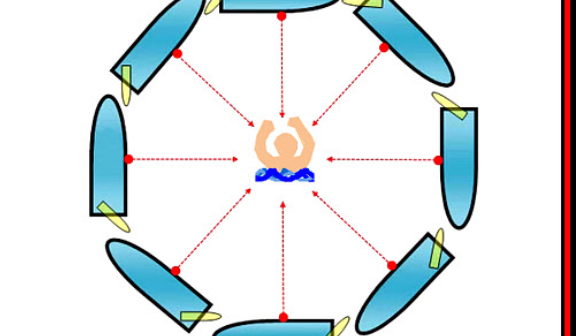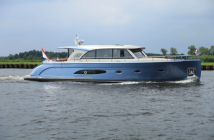Imagine that you are being swept down onto a buoy by a stiff wind or current. You have just seconds until you collide with this steel tower. And, it’s too late to back down with your engine. What now, skipper?
Your boat also turns around an imaginary pivot point located near her beam when you are underway. Make a turn to the left or right and you will turn around a specific point located between the beam and bow. Back down and make a turn to the left or right and you will turn around a specific point located between the beam and quarter. This applies to all vessels of any size under any propulsion (sail or power).
You will use pivot point each time you:
–Turn into or leave a slip.
–Approach a pier for docking.
–Maneuver to pick up a man overboard.
–Back and fill to turn in a tight space.
–Execute a slow or sharp turn into a channel.
–Use any spring line or anchor rode.
–Make emergency collision avoidance maneuvers.
A Tale of Two Boats
To pivot under control, you must apply three specific actions at the same time.
1. Place the object inside the pivot point area (i.e. adjacent to the beam).
2. Use full or almost full rudder to turn toward the object (wheel toward; tiller away).
3. Adjust throttle speed to maintain the relationship between pivot point and the object.
Imagine two identical sailboats: Boat A and Boat B. Both boats are beam to the wind or current and being set down onto the buoy described earlier. The boats are just a few feet away from the buoy when the skipper decides to take action. Neither boat has time to back down to avoid a collision.
Boat A chooses to turn away from the buoy. The skipper has the buoy inside the pivot point. What happens as he turns hard away? First, he will fight the wind or current and lose more ground. The stern will now be vulnerable to contact. He could give a burst of ahead propulsion to attempt to clear the stern. This strategy has a high degree of risk.
Boat B chooses to turn TOWARD the buoy because it’s inside the pivot point area (off the beam). He turns the wheel toward the buoy (or holds a tiller away) and gives a burst of throttle. This kicks the stern away and the forward momentum carries the bow clear of the buoy. Adjust the wheel or tiller as necessary to complete the maneuver. Read more:
https://www.skippertips.com/public/49.cfm




